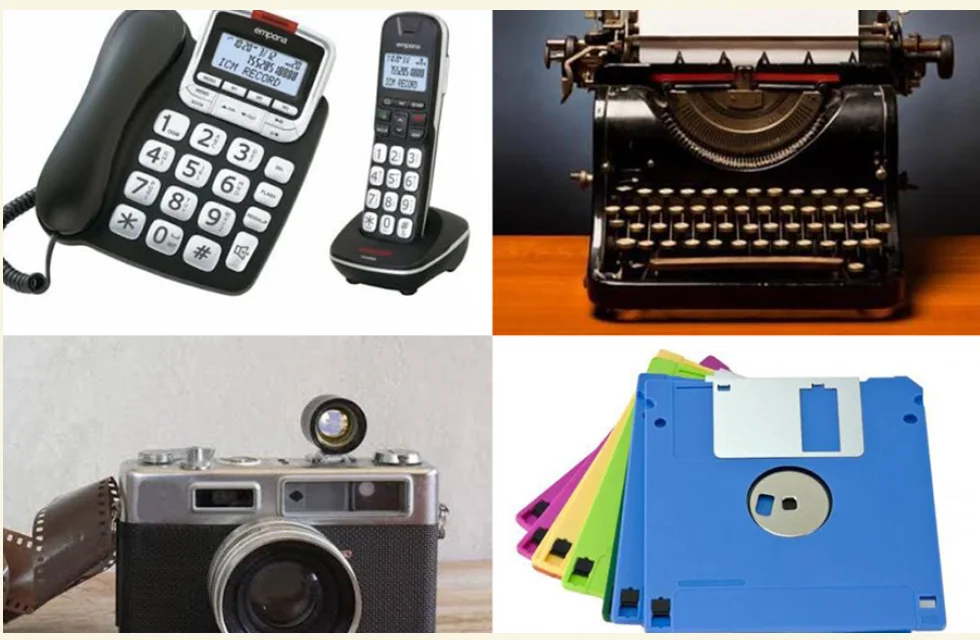As technology evolves, many devices and tools that once felt essential have gradually faded from daily use. Items we once relied on have been replaced by faster, more advanced alternatives, making them obsolete.
When a technology becomes outdated because of newer innovations, it is considered obsolete. Over the past decade, several once-popular gadgets and systems have disappeared, including typewriters, landlines, and VHS tapes.
Typewriters
First introduced commercially in 1874, typewriters became widely used after the mid-1880s. They were essential for writing tasks in offices, homes, and schools. However, computers eventually replaced typewriters with their faster, more versatile capabilities. By 2011, the last company producing manual typewriters in Mumbai, India, shut down permanently.
VHS Tapes
From the 1970s until the early 2000s, VHS tapes were the standard for watching and recording home videos. DVDs eventually took over as the preferred format, offering better quality and convenience. By 2008, VHS was largely phased out.
Film Cameras
Photography began with Joseph Nicéphore Niépce’s first photo in the 1820s. Film cameras became widespread years later, requiring physical reels of film that needed to be developed into printed photos. The rise of digital cameras and smartphones has made film cameras unnecessary. In fact, Canon sold its last film camera in 2018, eight years after halting production.
Floppy Disks
Floppy disks, once a common storage medium, first appeared in the 1970s. The original 8-inch version could hold just 80 kilobytes of data, while the smaller 3.5-inch disks stored up to 1.44 MB. By the mid-2000s, USB drives, memory cards, CDs, and cloud storage made floppy disks obsolete. Interestingly, the floppy disk’s image lives on as the “save” icon in many software programs.
Landline Phones
Landlines were a staple for over 100 years, ever since Alexander Graham Bell made the first phone call in 1876. Today, mobile phones have largely replaced them, offering the freedom to communicate from virtually anywhere.
In short, these technologies—once vital—have gradually been replaced by more efficient and versatile solutions as the digital world keeps advancing.















